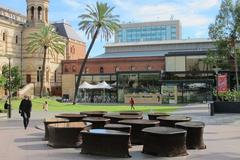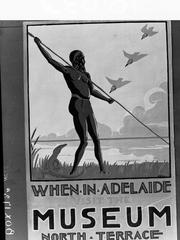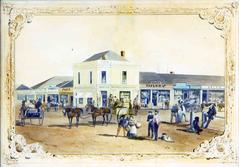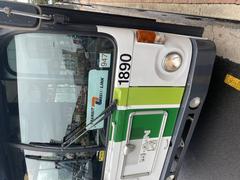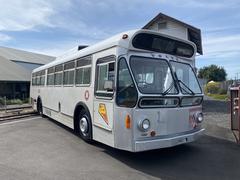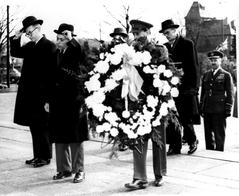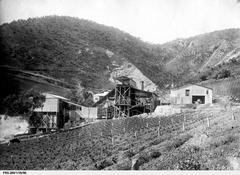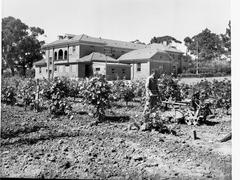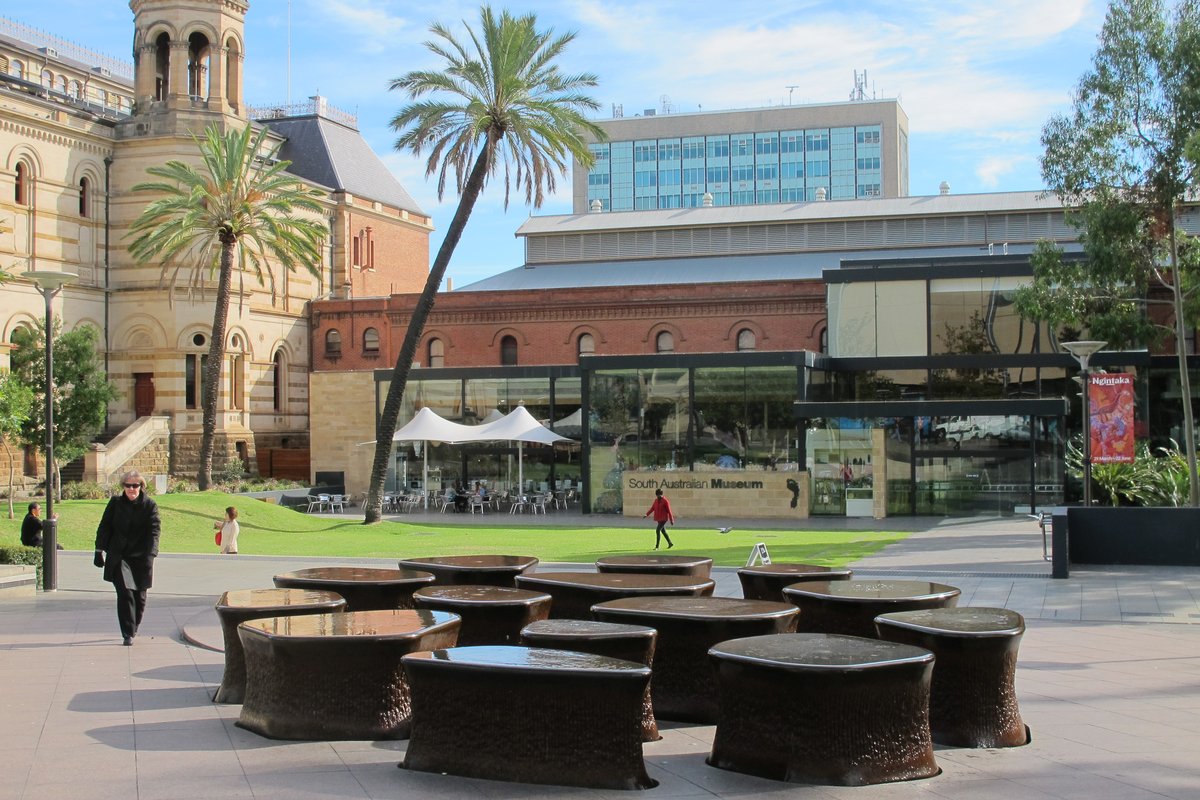
Visiting South Australian Museum: Hours, Tickets, and Travel Tips
Date: 23/07/2024
Why Visit the South Australian Museum?
Welcome to the comprehensive guide on the South Australian Museum, a cultural gem located in the heart of Adelaide, Australia. Established in 1856, this museum is one of the oldest and most respected institutions in the country. It offers an extensive collection of natural history specimens, cultural artifacts, and innovative exhibitions that cater to a wide range of interests. From history enthusiasts to science aficionados, the South Australian Museum provides a rich educational experience for all its visitors. This guide will cover everything you need to know for an unforgettable visit, including the museum’s history, visiting hours, ticket information, travel tips, and a look at some of its most notable exhibitions and research programs.
What You’ll Find in This Guide
- Introduction
- History of the South Australian Museum
- Establishment and Early Years
- Expansion and Development
- The Role of Sir Edward Stirling
- Mid-20th Century Modernization
- Indigenous Australian Collections
- Visitor Information
- Visiting Hours and Tickets
- Travel Tips and Accessibility
- Exhibitions and Special Events
- Recent Developments and Innovations
- Notable Exhibitions and Research
- Community Engagement and Education
- Preservation and Conservation Efforts
- Future Directions
- FAQ
- Conclusion
Discover the Rich History and Visiting Information of the South Australian Museum in Adelaide
Introduction
Welcome to a comprehensive guide on the South Australian Museum, one of the oldest and most renowned museums in Australia. Established in 1856 and located in the heart of Adelaide, this museum is a treasure trove of natural history, cultural artifacts, and innovative exhibitions. Whether you’re a history buff, a science enthusiast, or just looking for an educational outing, this article will cover everything you need to know, including visiting hours, ticket information, and what to expect during your visit.
History of the South Australian Museum
Establishment and Early Years
The South Australian Museum, located in Adelaide, was established in 1856, making it one of the oldest museums in Australia. Initially, it was part of the South Australian Institute, which also included a library and an art gallery. The museum’s early collections were modest, comprising mainly of natural history specimens and ethnographic artifacts. The museum’s first curator, Frederick George Waterhouse, played a pivotal role in expanding its collections and establishing its reputation (South Australian Museum).
Expansion and Development
In the late 19th and early 20th centuries, the museum underwent significant expansion. The construction of the North Wing in 1874 provided much-needed space for the growing collections. This period also saw the acquisition of significant artifacts, including the first dinosaur fossils and extensive ethnographic collections from the Pacific Islands and Indigenous Australian cultures. The museum’s focus on natural history and anthropology was solidified during this time, reflecting the scientific interests of the era (Adelaide City Heritage).
The Role of Sir Edward Stirling
Sir Edward Stirling, who served as the museum’s director from 1884 to 1912, was instrumental in its development. A prominent anthropologist and biologist, Stirling’s tenure saw the acquisition of numerous significant collections, including the first complete skeleton of a Diprotodon, an extinct marsupial. Stirling’s work in documenting Indigenous Australian cultures also contributed to the museum’s reputation as a leading institution for anthropological research (Australian Dictionary of Biography).
Mid-20th Century Modernization
The mid-20th century was a period of modernization for the South Australian Museum. In 1940, the museum became an independent institution, separate from the South Australian Institute. This change allowed for greater autonomy and the ability to focus on specialized research and exhibitions. The construction of the East Wing in 1965 provided additional space for exhibitions and research facilities, further enhancing the museum’s capabilities (South Australian Museum Annual Report).
Indigenous Australian Collections
One of the most significant aspects of the South Australian Museum’s history is its extensive collection of Indigenous Australian artifacts. The museum houses one of the largest and most comprehensive collections of Aboriginal cultural material in the world. This collection includes over 30,000 items, ranging from tools and weapons to ceremonial objects and artworks. The museum’s commitment to preserving and showcasing Indigenous cultures has made it a vital resource for researchers and the public alike (South Australian Museum).
Visitor Information
Visiting Hours and Tickets
The South Australian Museum is open daily from 10 AM to 5 PM, including weekends and public holidays, except for Good Friday and Christmas Day. Admission to the museum is free, although some special exhibitions may require a ticket. For up-to-date information on tickets and special exhibitions, please visit the museum’s official website.
Travel Tips and Accessibility
The museum is conveniently located on North Terrace, Adelaide, making it easily accessible by public transport, including buses, trams, and trains. There is also limited parking available nearby. The museum is wheelchair accessible, with ramps and elevators ensuring that all visitors can enjoy the exhibits.
Exhibitions and Special Events
Recent Developments and Innovations
In recent years, the South Australian Museum has continued to evolve, embracing new technologies and methodologies to enhance its exhibitions and research. The museum’s Biodiversity Gallery, opened in 2000, showcases the rich natural history of South Australia, featuring interactive displays and multimedia presentations. The museum has also embraced digital technologies, with virtual tours and online collections making its resources accessible to a global audience (South Australian Museum).
Notable Exhibitions and Research
The South Australian Museum has hosted numerous notable exhibitions over the years, attracting visitors from around the world. One of the most significant is the “Australian Aboriginal Cultures Gallery,” which opened in 2000. This permanent exhibition provides an in-depth look at the diverse cultures of Indigenous Australians, featuring artifacts, artworks, and multimedia presentations. The museum’s research programs have also made significant contributions to the fields of anthropology, paleontology, and natural history, with numerous publications and discoveries originating from its collections (South Australian Museum).
Community Engagement and Education
The South Australian Museum has a long history of community engagement and education. The museum offers a range of educational programs for schools and the public, including guided tours, workshops, and lectures. These programs aim to inspire curiosity and foster a deeper understanding of the natural world and human cultures. The museum’s commitment to education is reflected in its partnerships with local schools and universities, as well as its involvement in community events and festivals (South Australian Museum).
Preservation and Conservation Efforts
Preservation and conservation are central to the South Australian Museum’s mission. The museum’s conservation team works tirelessly to preserve its collections for future generations, employing the latest techniques and technologies. This includes the careful monitoring of environmental conditions, the use of specialized storage materials, and the restoration of damaged artifacts. The museum’s commitment to conservation ensures that its collections remain in excellent condition, allowing them to be studied and enjoyed by future generations (South Australian Museum).
Future Directions
Looking to the future, the South Australian Museum continues to innovate and expand its offerings. Plans for new exhibitions, research initiatives, and community programs are constantly being developed, ensuring that the museum remains a dynamic and relevant institution. The museum’s ongoing commitment to excellence in research, education, and conservation ensures that it will continue to be a leading cultural institution in Australia and beyond (South Australian Museum Strategic Plan).
FAQ
What are the South Australian Museum’s visiting hours?
The museum is open daily from 10 AM to 5 PM, except for Good Friday and Christmas Day.
How much are tickets to the South Australian Museum?
Admission is free, although special exhibitions may require a ticket.
Is the South Australian Museum accessible by public transport?
Yes, the museum is easily accessible by buses, trams, and trains.
Conclusion
The South Australian Museum’s rich history reflects its enduring commitment to the preservation and celebration of natural and cultural heritage. From its humble beginnings in 1856 to its current status as a world-renowned institution, the museum has played a vital role in the cultural life of South Australia. Its extensive collections, innovative exhibitions, and dedication to research and education ensure that it will continue to inspire and educate visitors for generations to come. Plan your visit today to explore one of Adelaide’s most significant historical sites (South Australian Museum).
References and Further Reading
- South Australian Museum https://www.samuseum.sa.gov.au
- Adelaide City Heritage https://adelaideheritage.net.au
- Australian Dictionary of Biography https://adb.anu.edu.au
- South Australian Museum Annual Report https://www.samuseum.sa.gov.au/annual-reports
- Australian Aboriginal Cultures Gallery https://www.samuseum.sa.gov.au/gallery/australian-aboriginal-cultures
- Research at the South Australian Museum https://www.samuseum.sa.gov.au/research
- Education Programs https://www.samuseum.sa.gov.au/education
- Community Engagement https://www.samuseum.sa.gov.au/community
- Conservation at the South Australian Museum https://www.samuseum.sa.gov.au/conservation
- International Collaborations https://www.samuseum.sa.gov.au/international-collaborations
- Technological Innovations https://www.samuseum.sa.gov.au/technology
- Future Directions https://www.samuseum.sa.gov.au/future-directions
